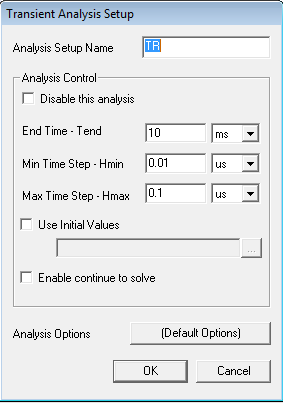loxly
Junior Member level 3
- Joined
- Mar 16, 2012
- Messages
- 29
- Helped
- 6
- Reputation
- 12
- Reaction score
- 6
- Trophy points
- 1,283
- Location
- Zagreb, Croatia
- Activity points
- 1,530
I have some questions regarding to design of RCD circuit of flyback converter.
Converter specifications:
input: 50 V
output 100 V, 100 W (100 Ohm resistance)
Output current 1 A
transformer current ripple 2A (CCM)
output capacitor 680 uF, 100 V
Turns ratio: 1
Duty cycle: 0.67
The problem is that when I'm using calculated R and C values ( according to some equations I've found 10k, 47 nF) , I still get quite large (above kV) voltage spikes on my Simplorer model simulation. But when I use a combination of quite larger value for C (47 or 150 uF) and R (33k, for smaller losses) everything seems ok on the simulation! (spikes are reasonable).
I've been searching a lot, and I haven't found anywhere that someone uses RCD snubber capacitor much larger than 47 nF!
It's maybe because of large output capacitor, but I can't change it. It is already on the board where we constructed universal non-isolated DC converter.
Are there any drawbacks of using such a large capacitor in snubber circuit? What could cause this?
I don't have anything against using such a big capacitor if you don't
I don't have any experience in flyback design, so I'm asking you.
Thank you for your help
Lovro
P.S. I have modeled flyback transformer in PExpert and add model in simplorer, so it's pretty accurate. I can even send you my flyback Simplorer model if needed!
Converter specifications:
input: 50 V
output 100 V, 100 W (100 Ohm resistance)
Output current 1 A
transformer current ripple 2A (CCM)
output capacitor 680 uF, 100 V
Turns ratio: 1
Duty cycle: 0.67
The problem is that when I'm using calculated R and C values ( according to some equations I've found 10k, 47 nF) , I still get quite large (above kV) voltage spikes on my Simplorer model simulation. But when I use a combination of quite larger value for C (47 or 150 uF) and R (33k, for smaller losses) everything seems ok on the simulation! (spikes are reasonable).
I've been searching a lot, and I haven't found anywhere that someone uses RCD snubber capacitor much larger than 47 nF!
It's maybe because of large output capacitor, but I can't change it. It is already on the board where we constructed universal non-isolated DC converter.
Are there any drawbacks of using such a large capacitor in snubber circuit? What could cause this?
I don't have anything against using such a big capacitor if you don't
I don't have any experience in flyback design, so I'm asking you.
Thank you for your help
Lovro
P.S. I have modeled flyback transformer in PExpert and add model in simplorer, so it's pretty accurate. I can even send you my flyback Simplorer model if needed!


